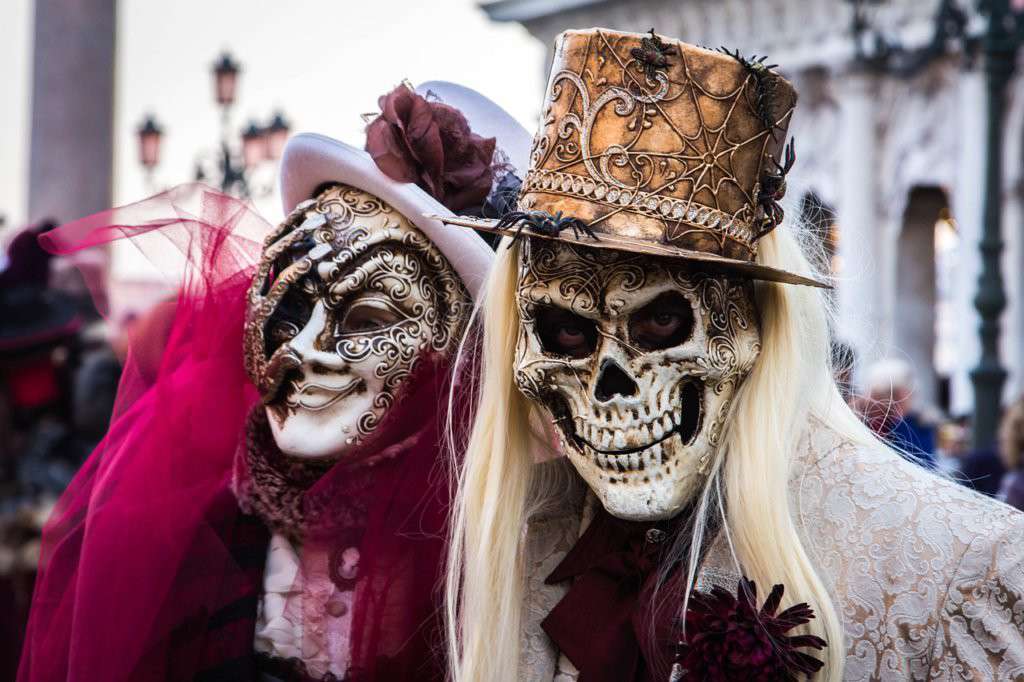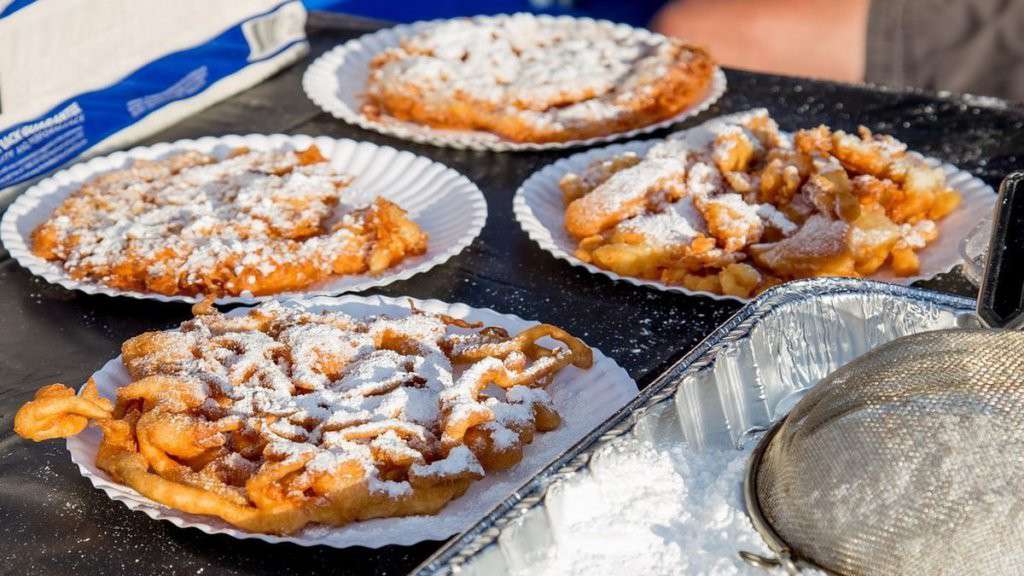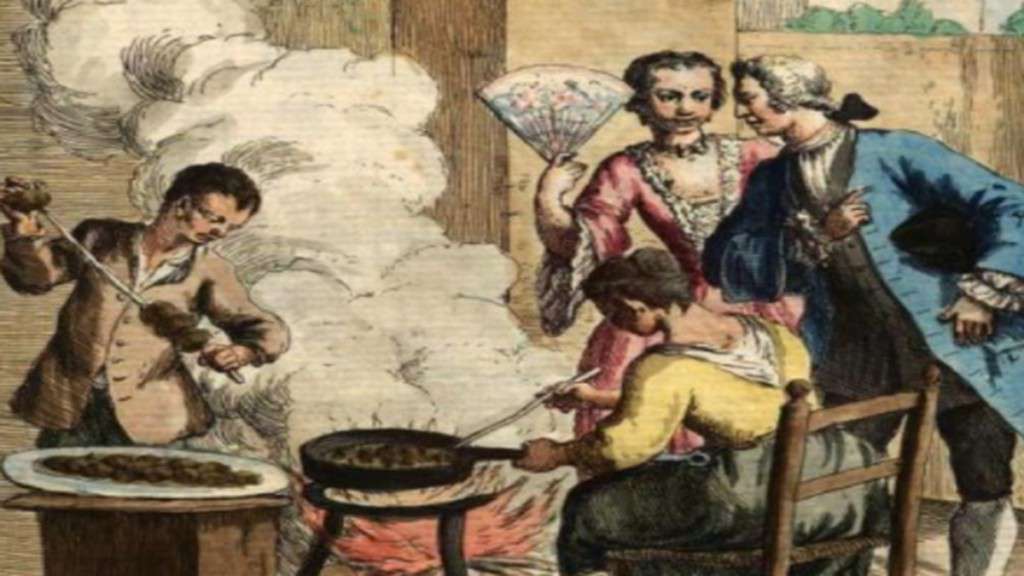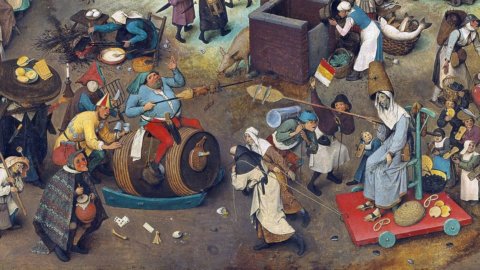The excesses of today's Carnival are undoubtedly much milder than the medieval carnival. It takes place in a period of the year between the winter solstice and the dawn of spring; in this passing time they were still strong fears for the fertility of the new agricultural year due to the dominion of celestial darkness over light.
The first news comes to us through the voluminous Latin work of the Saturnalia which were celebrated close to the present Christmas. Macrobius, with reference to Saturn to whom the Saturnalia festivals were dedicated, states [...] "indicates how he is the time from which all things are alternatively generated and destroyed and are reborn again from him" [...], (" similiter significatur eum tempus esse, a quo vicibus cuncta gignantur absumanturque et ex deo denuo renascantur”)(Sat. I, 8, 9).
The Church introduces in February the candlemas party, during which the candles were blessed, with a strong call to the celestial lightand, in an attempt to tame the excesses due to the burning of puppets which sadly referred to the evil spirits, as well as to limit travel through the streets of the city, carrying lighted candles in honor of the goddess Februa.

In this context the feast of is inserted in January S. Antonio Abate who preserves the ambivalence in the legendary story; in fact, he not only brings back to earth the fire stolen from hell, but it is traditionally accompanied by pork which provides excellent fat for making ointments.
Even today, the order of Antoniti monks produces skin ointments from pork fat. The killing of the pig was a propitiatory rite which was already common in ancient Rome as Macrobius testifies to us in his Saturnalia […]”on the twelfth day before the calends of January they offer sacrifices to Hercules and Ceres with a pregnant sow, bread and honeyed wine”[…](Sat. III, 11, 10).
Carnival expressed the total subversion of all social rules; already in Roman times [...] "the matrons served dinner to the slaves, as the masters do during the Saturnalia" [...] ("et servis cenas adponebant matronae ut domini Saturnalibus") (Sat. I, 12, 7).
Exaggeration in every expression of the human body was the rule: violence, gambling, drunkenness and wanton sex; the towns were criss-crossed by bands of masked youths begging.
Already Caesarius of Arles (470-543) condemned as sacrilegious those rites which made men look like demons during the calends of January, and exhorted not to allow "men disguised as stags or heifers or any other monstrosity to come before your dwellings” (“cervulum, sive juvencam, aut alia quaelibet portenta, ante domosvenire”).
On many occasions the Carnival was the fuse for popular uprisings then difficult to sedate.
The climate of the Carnival is perfectly outlined by a detail of the painting by Bruegel where it is synthesized lantithesis between meat (sausages, chicken) cooked over a live fire, proudly brandished by a ruddy villain symbol of the Carnival and the fish, in much smaller quantities, Lent symbol, associated with thin and pale people.
.The exaggeration of food is an essential aspect of Carnival where all the rules of proper nutrition are overturned.
Waste is the ritual rule, in contrast to the harsh daily reality, lacking both in terms of quality and quantity; having plenty of food to eat or waste generates social cohesion since Carnival is a collective celebration and, if it could not be purchased, a begging could always be organized which the poor recipients could not escape. The consumption of food is thereby subverted.
Since it can be schematized that Food is conceived in Winter as Frugality for the purpose of conservation, in Carnival as Abundance for the purpose of waste, in Lent as Frugality for the purpose of fasting. Likewise for meat we have moderate consumption in winter, immoderate consumption at Carnival, absent in Lent
Carnival was born as popular ritual which has no other way to exaggerate at the table than to enrich the calorie content by frying. Here then is that a simple sheet of water and flour used for common laganas, if added with lard, can become tasty frappe, preferably with the addition of a few eggs.

The widespread diffusion of chatter, which takes on different denominations in the various regions, bears witness to this gastronomic conversion from "sfoglia" to a carnival dessert. Sugar is undoubtedly a later addition especially when the carnival is "urbanized" and enters the wealthiest homes.
There is no shortage of preparations made with cracklings, residues from the processing of lard, but more generally, the carnival was the time in which meat could and should be consumed since it was in shortage throughout the year.

On the street corners it was possible to buy fritters rigorously fried in lard to the point that the association of 'fritoleri' had arisen in Venice; in other periods of the year along the roads it was possible to buy simple scones obtained by hot coagulation of a batter inside a hot iron, as can be seen in the painting by Bruegel.
The slaughter of the pig in January, on the occasion of the festivities of S. Antonio Abate, he was able to support this increase consumption of meat and fat which was later transformed into sausages and black puddings.
Cooking over high heat replaces the daily cooking in stews thus obtaining more decisive and marked flavors on the palate. In addition to the excess of proteins and fats, the carnival, in its most ancestral form, was characterized by excesses of sugars especially in the exaggerated use of honey or cooked must, since the daily diet was characterized by the bitter or acid taste of vegetables, greens and wild herbs in soups. Simple doughs of water and flour that during the year were the ingredients of simple polenta, added with legumes and leeks, become tasty sweet and crunchy pancakes during Carnival.
We are indebted to the pig if our culture has been able to indulge its excesses at the table.
Below are the local denominations of the “chiacchiera”
Sicily Nacatola
Abruzzo Frappe
Brands Sfrappe/fiocchetti
Veneto Crostoli/galani
Lombardy Lettuces
Piedmont Lies
Tuscany Cenci
Lazio Frappe
Sardinia orillettas





